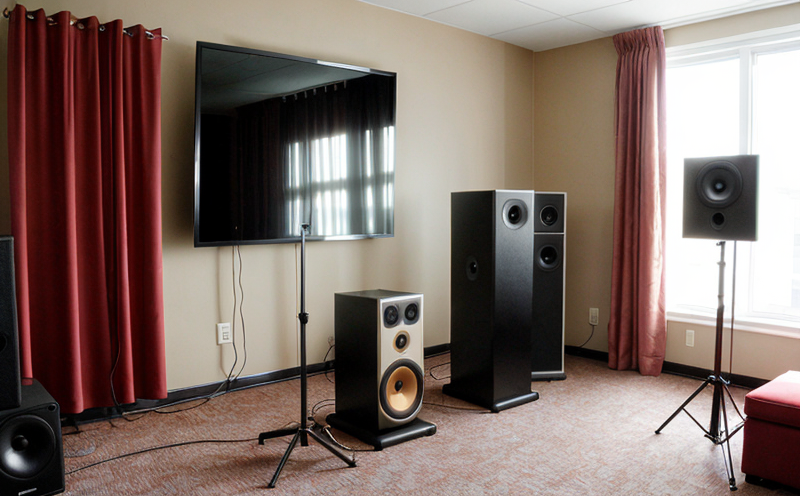ISO 15666 Community Noise Annoyance Testing
The ISO 15666 standard provides a framework for measuring and assessing community annoyance caused by environmental noise. This service focuses on the evaluation of sound levels in urban environments, residential areas, and other densely populated regions. The primary objective is to quantify the impact of noise on human perception and comfort.
The testing methodology involves the deployment of specialized equipment that captures ambient noise data over specified periods, typically 24 hours or longer. This data is then analyzed using psychoacoustic models derived from ISO standards. These models account for various factors such as sound level, frequency content, temporal patterns, and contextual elements like weather conditions and time of day.
The process begins with a detailed site assessment to identify potential noise sources and areas of interest. This is followed by the installation of noise monitoring equipment at predetermined locations within the study area. The equipment captures continuous sound data which is later processed using advanced algorithms designed to extract relevant psychoacoustic metrics.
Once collected, the raw data undergoes rigorous analysis aimed at determining annoyance levels. Key parameters include the day-night average sound level (Ldn), which considers both day and night time noise exposure, as well as the equivalent continuous A-weighted sound level (Leq). These metrics are used to calculate the community annoyance index (CAI) based on established thresholds provided in ISO 15666.
For accurate interpretation of results, it is crucial to consider contextual factors such as local land use patterns and population density. This ensures that the assessment reflects real-world conditions accurately. The final report includes a comprehensive analysis of noise impacts alongside recommendations for mitigation strategies where necessary.
The significance of ISO 15666 lies in its ability to provide objective measures of community annoyance, enabling stakeholders like local authorities and urban planners to make informed decisions regarding environmental quality. By adhering strictly to this international standard, our laboratory ensures high-quality, reliable results that are widely accepted across different jurisdictions.
- Objective measurement of sound levels in various environments
- Evaluation using established psychoacoustic models
- Comprehensive analysis including day-night average sound level (Ldn)
- Inclusion of contextual factors for more accurate assessments
Customer Impact and Satisfaction
The implementation of ISO 15666 Community Noise Annoyance Testing yields significant benefits for our clients. By leveraging this standardized approach, organizations can confidently demonstrate compliance with relevant regulations while also gaining valuable insights into their operations’ environmental impact.
- Enhanced reputation through transparent and compliant practices
- Informed decision-making supported by robust data analytics
- Improved stakeholder relationships due to proactive management of noise issues
- Cost savings achieved from targeted interventions rather than generalized measures
International Acceptance and Recognition
The ISO 15666 standard has been adopted by numerous countries worldwide, reflecting its acceptance as a leading benchmark for community noise annoyance testing. Its widespread use underscores the importance placed on this aspect of environmental quality.
Use Cases and Application Examples
This service finds application in various sectors including urban planning, real estate development, transportation infrastructure projects, and industrial facilities. For instance, developers can use these tests to ensure their projects meet local noise standards before construction begins.





